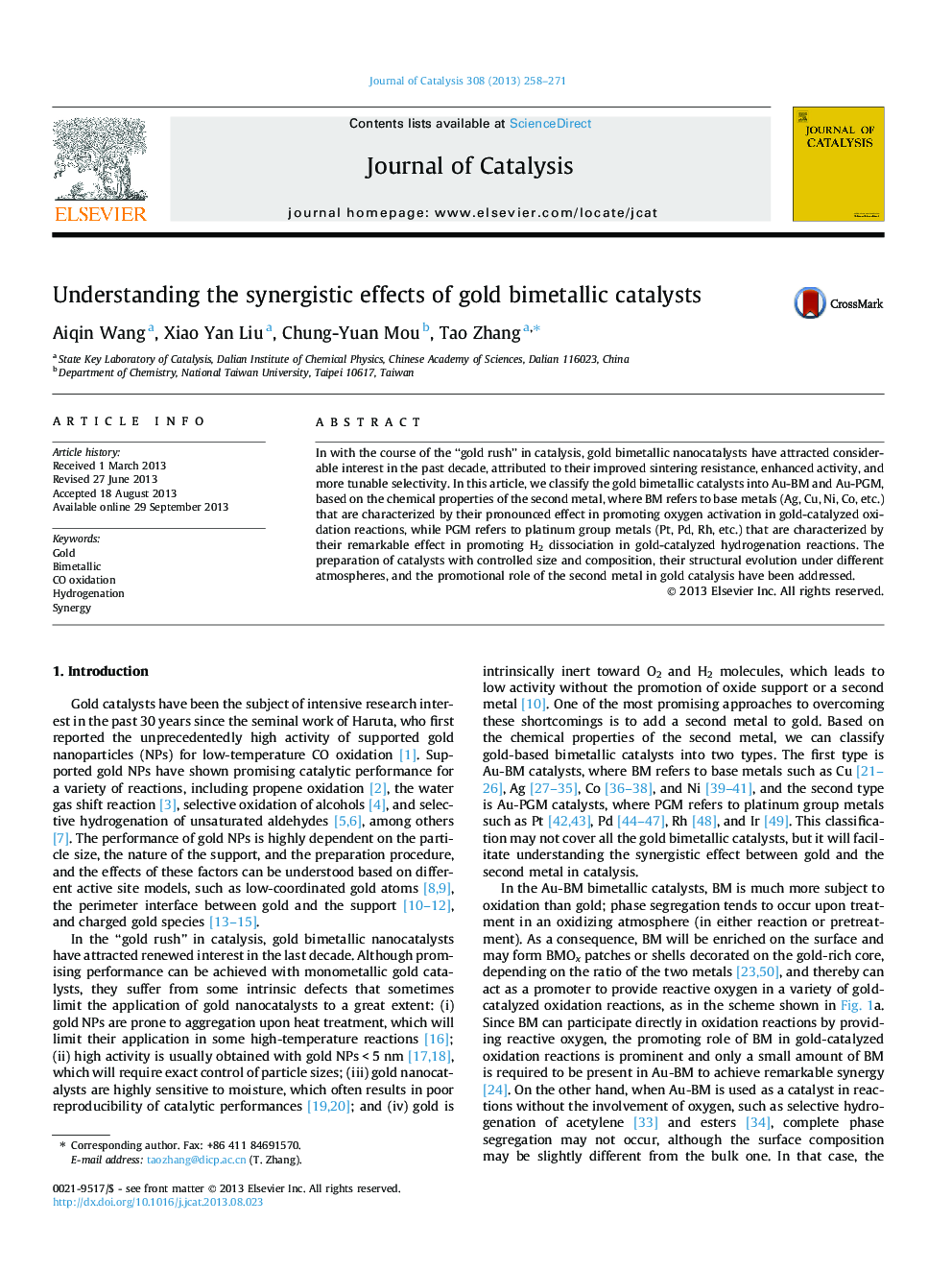| Article ID | Journal | Published Year | Pages | File Type |
|---|---|---|---|---|
| 61203 | Journal of Catalysis | 2013 | 14 Pages |
•The synergy of gold bimetallic catalysts is addressed based on Au-BM and Au-PGM.•Au-BM alloy transforms to the active phase Au-BMOx in oxidation reactions.•Isolated PGM single atoms promote the dissociation of H2 in hydrogenation reactions.
In with the course of the “gold rush” in catalysis, gold bimetallic nanocatalysts have attracted considerable interest in the past decade, attributed to their improved sintering resistance, enhanced activity, and more tunable selectivity. In this article, we classify the gold bimetallic catalysts into Au-BM and Au-PGM, based on the chemical properties of the second metal, where BM refers to base metals (Ag, Cu, Ni, Co, etc.) that are characterized by their pronounced effect in promoting oxygen activation in gold-catalyzed oxidation reactions, while PGM refers to platinum group metals (Pt, Pd, Rh, etc.) that are characterized by their remarkable effect in promoting H2 dissociation in gold-catalyzed hydrogenation reactions. The preparation of catalysts with controlled size and composition, their structural evolution under different atmospheres, and the promotional role of the second metal in gold catalysis have been addressed.
Graphical abstractGold bimetallic catalysts are classified into Au-BM (base metal) and Au-PGM (platinum group metal) based on the chemical properties of the second metal, and the synergistic effects have been respectively addressed in oxidation and hydrogenation reactions.Figure optionsDownload full-size imageDownload high-quality image (269 K)Download as PowerPoint slide
